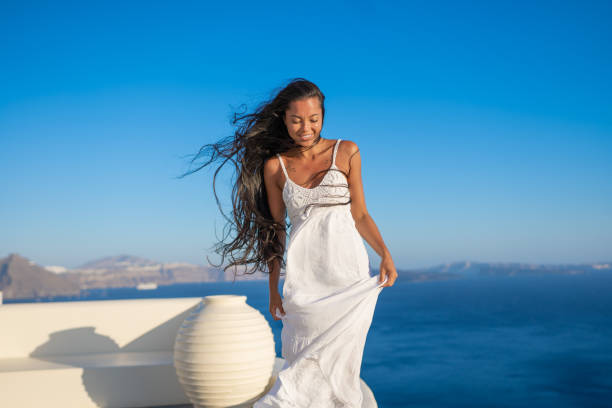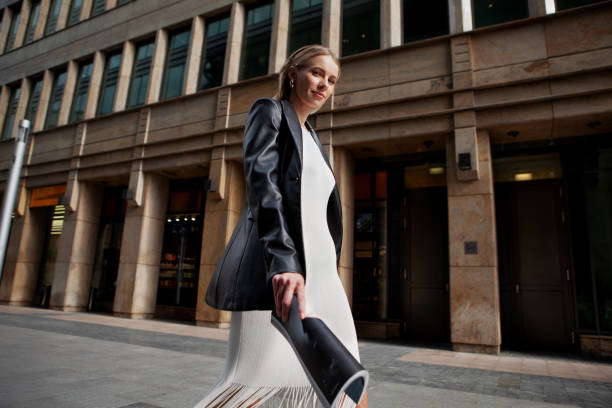The fashion world is ever-evolving, but one thing remains constant: dresses are an essential staple in every woman’s wardrobe. Whether it’s for a casual day out or a glamorous evening event, finding the perfect dress can be a game-changer. In this article, we’ll delve into the reasons why dresses are timeless and how you can find the perfect one to suit your style and needs.
The Timeless Appeal of Dresses

Dresses have been a beloved garment for centuries, and their enduring popularity can be attributed to their versatility and elegance. From the little black dress to flowing maxi gowns, dresses offer something for every occasion. They can be simple and understated or elaborate and eye-catching. This incredible range makes them indispensable in any wardrobe.
Moreover, dresses are known for their ability to adapt to various seasons and trends. Whether it’s a floral summer dress or a cozy knit winter number, the adaptability of dresses ensures they remain a favorite, regardless of the time of year. The timeless appeal of dresses lies in their ability to blend functionality with style effortlessly.
Finding Your Body Type
Knowing your body type is the first step to finding the perfect dress. It can make shopping more efficient and enjoyable. Here are few common body types and some dress styles that complement them:
-
Hourglass:
Fitted dresses that accentuate the waist. -
Pear:
A-line dresses that highlight the upper body. -
Apple:
Empire waist dresses that draw attention upwards. -
Rectangle:
Belted dresses to create curves. -
Inverted Triangle:
Dresses with fuller skirts to balance the shoulders.
Understanding your body type helps in selecting dresses that enhance your natural shape, making you feel confident and comfortable.
Choosing the Right Fabric
The fabric of a dress can significantly impact its fit and comfort. Different materials offer varying degrees of flexibility, breathability, and structure. For instance, cotton is excellent for casual daywear due to its comfort and breathability. Conversely, fabrics like silk and satin are perfect for formal events because of their luxurious feel and appearance.
Meanwhile, knit fabrics are ideal for cooler weather because they provide warmth and offer a snug fit. On the other hand, lightweight fabrics such as chiffon or georgette are great for summertime, providing a breezy and flowy effect. Understanding the feel and structure of different fabrics helps in choosing a dress that is not only stylish but also practical.
Colors and Patterns: A Guideline
Color and pattern choices can elevate a dress from mundane to magnificent. While classic colors like black, white, and navy are timeless, don’t shy away from experimenting with bolder hues. Red, emerald, and pastel shades can add a fresh splash of personality to your wardrobe.
Patterns also play a pivotal role in defining the vibes of a dress. Floral prints exude a feminine and carefree attitude, whereas geometric and abstract designs can offer a modern and edgy look. Polka dots and stripes can add a fun and whimsical touch to your ensemble. The key is to choose colors and patterns that resonate with your personal style and the occasion.
Accessorizing Your Dress
Accessories can transform a simple dress into an extraordinary outfit. The right accessories can add flair and make the dress suitable for different occasions. For example, pairing a dress with statement jewelry and high heels can make it ideal for a night out. Conversely, adding a denim jacket and sneakers can give it a more casual vibe.
Belts can also be a game-changer, especially for dresses that need a little more shape. Scarves, hats, and handbags are other accessories that can add character and complete the look. The golden rule is to balance — if the dress is elaborate, keep the accessories minimal, and vice versa.
Conclusion
Dresses are more than just a fleeting trend; they are a mainstay in the world of fashion. Their versatility, timeless appeal, and adaptability make them indispensable in any wardrobe. From understanding your body type to choosing the right fabric, color, and accessories, several factors can help you find the perfect dress that suits your style and needs.
FAQ
What type of dress is best for a petite figure?
Petite figures often benefit from dresses that elongate the body, such as A-line or empire waist dresses. Avoid very long dresses unless they are fitted, as they can overwhelm a smaller frame.
How can I make a simple dress look more glamorous?
Accessories are key! Pair your dress with statement jewelry, high heels, and a stylish clutch. Additionally, consider a sophisticated hairstyle and makeup to elevate your look.
What dress styles are suitable for a formal event?
For formal events, opt for dresses in luxurious fabrics such as silk, satin, or chiffon. Look for styles like floor-length gowns, cocktail dresses, or sophisticated sheath dresses.
Is it okay to wear patterned dresses to a professional setting?
Yes, patterned dresses can be worn in professional settings as long as the patterns are subtle and the dress has a professional cut. Opt for classic patterns like pinstripes, small checks, or understated florals.
How do I maintain the quality of my dresses?
Always follow the care instructions on the label. Generally, it’s best to wash delicate fabrics by hand or use a gentle machine cycle. Store dresses in a cool, dry place, and avoid hanging heavy dresses to maintain their shape.
